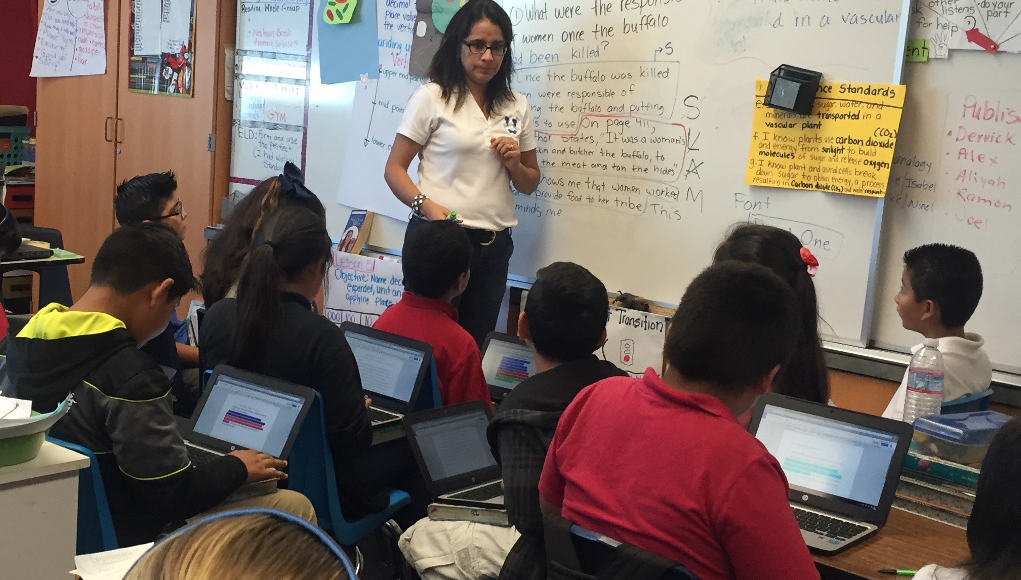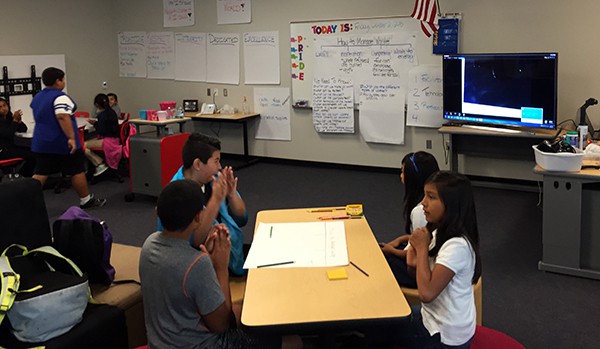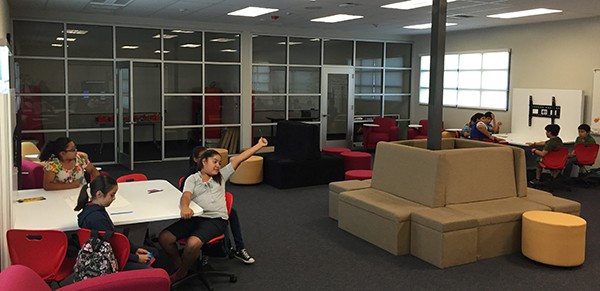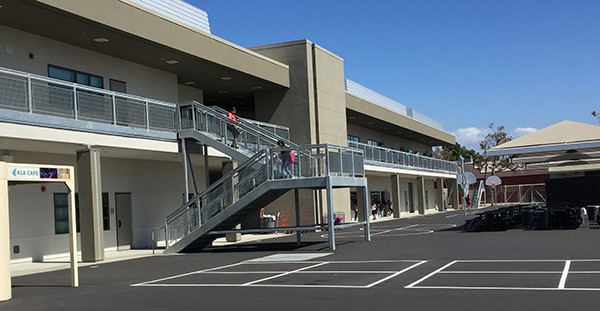David Haglund on Lessons Learned in Santa Ana

Feature image courtesy of SAUSD
Things just got more pleasant in Pleasanton, California. The school board had the good sense to hire David Haglund, the brains behind academic advancements in Santa Ana and Riverside.
If you take I-580 over the brown hills and go half an hour east of the Oakland airport, you’ll hit Pleasanton. The school district serves about 15,000 students and is transitioning to 21st Century learning. They recently passed a $270 million bond and are thinking about redesigning their schools–and Haglund is just the guy to lead the effort.
 When we heard about the new gig, we called Haglund (@PUSD_Supt) for lessons learned in Santa Ana.
When we heard about the new gig, we called Haglund (@PUSD_Supt) for lessons learned in Santa Ana.
“I downplay technology,” said Haglund. He prefers to consider the kinds of learning experiences that will motivate and empower learners. “I ask what facilitates empowerment, what provides access to resources on and off campus,” said Haglund. “Young people need tools to connect, collaborate, gather feedback and engage with people far away.”
Haglund wants to see young people engage the world, to build social capital by accessing people working in the field a young person is studying. Fourth graders in Santa Ana recently worked with Edward James Olmos on short films. They screened their films at a downtown theater and shared them with producers in Santa Monica.
“We’re not waiting for high school to provide formative feedback on careers,” said Haglund.
Santa Ana elementary students visited Disney Studios in Burbank. Haglund watched his students engage with producers in a professional way and then stay in touch for months after. “It’s not about the device, it’s the access the device facilitates.”
The Santa Ana school has a sister school in China. Students come from China for a week and Santa Ana students are able to start their pen pal relationships prior to the visit and continue thereafter.
Sure, tech can get in the way, Haglund says. Teachers need to know when to turn the device on and turn it off. Learners need to understand the palette of tools available to them. Haglund believes in purposeful interaction–and sometimes that’s online, but often it’s face-to-face.
When young students are developing language and motor skills there should be limits to screen time, Haglund says. In Santa Ana, they didn’t provide 1:1 devices until third grade. Teachers had access to devices and could pass them out but students didn’t have them full time.
Without access in middle and high school, “It’s like trying to teach them to drive in Utopialand at Disney,” said Haglund. “We need to give them experiences and and allow them to explore.”
Exploration leads to important life skills. Santa Ana has an assertive cyber safety and security program. Students and parents sign an acceptable use form and the district offers classes on what to look for and how to supervise device usage.
“It’s important for parents and teachers to manage devices, just like TV,” said Haglund.
Haglund still loves print books and thinks they are a great UX for many learners, but he believes in helping young people understand themselves and how they learn best. “Do what you need to do to learn,” said Haglund. “Some kids don’t like tech and think it gets in the way of socialization.”
David was an elementary curriculum specialist. He found that it’s not about overlaying tech on content, but seeing where tech is called for–never tech for tech sake. “A few kids will need tech for work,” said Haglund, “but we don’t need to teach everyone CAD software, for example.”
He’s a big fan of coding but for young kids more than as a career skill. “Programming is a mindset and a great foundation for math,” he said.
When Haglund goes to conferences, he looks up graduates from his district and has dinner with them. He was in Boston recently and got a hold of nine students at MIT, Harvard, Tufts and Boston University. He asked them all, “What did we do well? And, how did we not prepare you?”
Chris Camacho, a student at Tufts, had AP CS in Santa Ana but told Haglund that students needed to be better prepared for a college engineering curriculum. He offered to teach coding to ninth graders. So this summer Camacho and four other Santa Ana grads will be teaching coding.
About 2,000 students take online classes each year in Santa Ana, the majority of whom are working on credit recovery or blended opportunities. “They build rather than buy curriculum so that teachers feel ownership,” said Haglund.
Last year we recorded an interview with David where he described his close connection with Santa Ana. His grandfather played football at Santa Ana High School in 1934. We spotted four important innovations that David and his partner Rick Miller facilitated in Santa Ana:
- High access strategy: school-based decisions about devices and deployment;
- Portfolio strategy: a shift from district-led managed instruction to school-led personalized learning;
- New school development strategy: promoting school options and incubating next gen models; and
- Using projects to manage change and develop distributed leadership (five Santa Ana examples were included in Preparing to Lead in a Project Based World).
Haglund is the fifth superintendent in Pleasanton since 2015. They are fortunate to have landed one of the most thoughtful people in the sector. Keep an eye on the district–you’ll see more good things happening for kids there.
For more, see:
- Getting Smart Podcast | David Haglund, Santa Ana Unified School District
- Use Projects to Manage Change and Develop Leaders
Stay in-the-know with all things EdTech and innovations in learning by signing up to receive the weekly Smart Update.










0 Comments
Leave a Comment
Your email address will not be published. All fields are required.